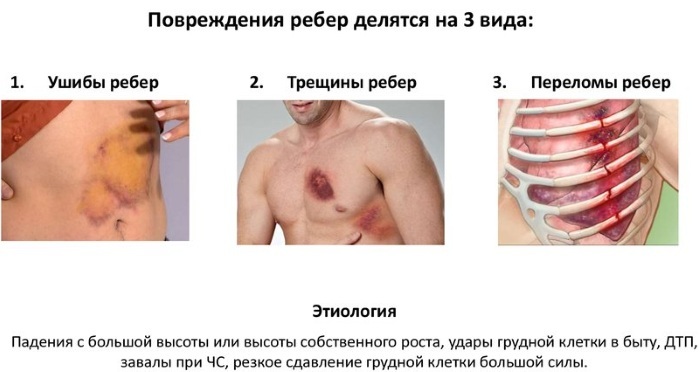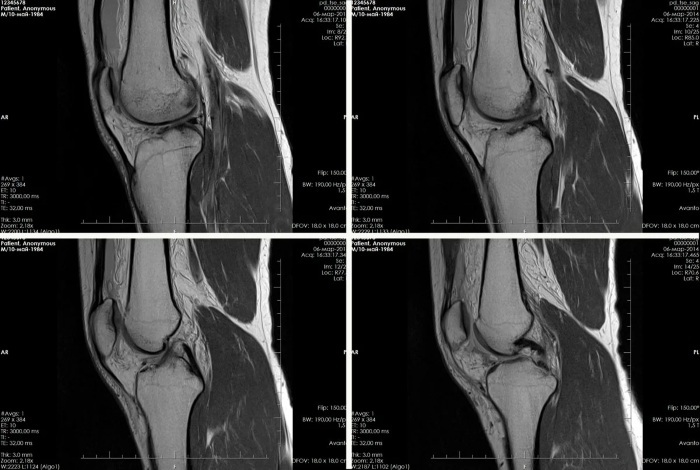Hip dysplasia - a common congenital abnormality associated with underdevelopment of the main parts of the articulation or incorrect position relative to each other. If hip dysplasia disturbed function of the locomotor system, but early detection and timely treatment of the defect leads to a complete recovery of the child.
GENERAL
 The hip joint connects the biggest bones of the human body, so it is mobile and able to withstand high loads. This is ensured by the connection of the femoral head with the acetabular pelvic cavity with four cords. Their bands are permeated by nerve endings and blood vessels, so their damage or jamming provoke degenerative phenomena in the head bone.
The hip joint connects the biggest bones of the human body, so it is mobile and able to withstand high loads. This is ensured by the connection of the femoral head with the acetabular pelvic cavity with four cords. Their bands are permeated by nerve endings and blood vessels, so their damage or jamming provoke degenerative phenomena in the head bone.
In newborns, a hip dysplasia (TPA) is shown the formation of a wrong of its departments, and the lost opportunity to hold the femoral head in the physiological position. Such a state, depending on the structures of bias characteristics is characterized as a subluxation or dislocation.
disease statistics:
- Deviations in the development of this area are recorded in infants quite often. On average, these rates are 2-3% among children. In Scandinavia hip dysplasia fixed bit more often, while the southern Chinese and Africans - is rare.
- Pathology often affects girls. They constitute 80% of patients diagnosed with hip dysplasia.
- On the facts of family history indicates that a family history of the disease are recorded in one third of patients.
- In 60% of cases diagnosed dysplasia of the left hip joint, the share of the right joint injury or both simultaneously accounting for 20%.
- Noting the relationship between the traditions of tight swaddling and increased morbidity. In countries where it is not made artificially limit the mobility of children, cases of hip dysplasia are rare.
CAUSES

The elements of the musculoskeletal system are laid at 4-6 weeks of gestation. The final formation of the joints is completed after the child begins to walk.
The most frequent cause of disorders arising during fetal development, are genetic deviations (25-30% of cases), which are transmitted through the maternal line. But other factors also can adversely affect these processes.
Causes of hip dysplasia in newborns:
- Large fruit is exposed anatomical displacement of the bones when it is misplaced inside the uterus.
- The effect on the fetus physical factors and chemical agents (radiation, pesticides, medicines).
- Malposition. First of all, it is a breech presentation, in which the fruit rests on the lower part of the uterus is not the head, as it should be normal, and the pelvis.
- kidney disease in the unborn child.
- Genetic susceptibility in the event of the same problems with parents in childhood.
- Pronounced toxemia at the initial stage of gestation.
- tone of the uterus during child bearing.
- Mother's disease - heart and vascular diseases, liver, kidney, and avitaminosis, anemia, and metabolic disorder.
- Viral infections transferred during pregnancy.
- Effect of increased progesterone concentration in the final weeks of pregnancy could weaken the ligaments of the child.
- Bad habits and unhealthy diet expectant mother at which marked deficiency of trace elements, vitamins B and E.
- Unfavorable environment in the region of residence of parents causes frequent (in excess of 6 times) cases of hip dysplasia.
- Tradition of tight swaddling.
CLASSIFICATION
Types of anatomical irregularities in the TPA:

- Acetabular dysplasia - deviations in the structure of the acetabulum. Affected cartilage limbus, located at the edges. The pressure of the femoral head causes its deformation, displacement and torsion of the inside of the joint. It occurs tensile capsules, cartilage and ossification of movement of the femoral head.
- Epiphyseal. This hip dysplasia in newborns is determined with stiffness in joints, limbs causing pain and deformation. You can change the shaft angle in the direction of increasing or decreasing.
- Rotary dysplasia. Placement of the bone as viewed in the horizontal plane incorrect, clubfoot manifested.
The severity of TTP:
- Grade I - predvyvih. Deviation of development in which the muscles and ligaments are not changed, the head is inside a beveled joint cavity.
- Grade II - subluxation. only a portion of the femoral head is inside the joint cavity, as seen it move up. Ligaments are stretched and lose their strength.
- III degree - dislocation. The femoral head completely out of the basin and is located above. Ligament in tension and stretched and cartilage rim enters into the joint.
SYMPTOMS
The first signs of hip dysplasia in infants may appear when you reach the age of 2-3 months, but still need to diagnose them in a hospital.
The main symptoms are:

- Restriction during hip abduction unhealthy characteristic of II and III degree of dysplasia. In healthy children, knees bent legs are easy to breed in hand at an angle of 80-90 degrees. Pathological changes prevent this, and manages to separate them by no more than 60 degrees.
- The asymmetry of the folds under the knees, buttocks and groin. Normally, they are symmetrical and uniform depth. Attention should be paid in the event that in the prone position folds with one hand deeper and are located above. This feature is not considered to be objective, since it may not indicate a problem with bilateral dysplasia. Many children crease pattern is aligned to three months.
- Symptom slipping or clicking. The femoral head slips off while driving, it is accompanied by a characteristic clicking on dilution or reduction of the legs. Such a feature is a significant symptom deviations 2-3 weeks after birth. In a study of other children, this method is not informative.
- Shortening of one leg is a reliable sign of dysplasia and detected when combining kneecaps in the supine position. This symptom may indicate the formed hip dislocation.
- Later rising to his feet, irregular walking may occur already in the last stages of hip dysplasia.
Identification of at least one of these symptoms is an occasion to refer to the children's orthopedist.
The main symptoms of hip dysplasia in infants can be detected simultaneously with the associated symptoms.
Secondary symptoms:
- violation keyword and sucking reflex;
- Muscle atrophy in the affected area;
- reduced pulsation of the femoral artery from the changes in the joints;
- signs of torticollis.
DIAGNOSTICS
The child signs of hip dysplasia in the form of dislocation can be diagnosed even in the nursing home. Neonatologist should carefully examine the child for the presence of such deviations in certain pregnancy complications.
The risk group includes children who are classified as major, kids with deformed feet and aggravated on the basis of heredity. In addition, attention is paid to toxaemia of pregnancy for the mother and the child's sex. Newborn girls are subject to mandatory inspection.
Survey Methods:
- Visual inspection and palpation conducted to identify the characteristic symptoms. In infants hip dysplasia has featured as dislocation and subluxation, which are clinically difficult to identify. Any deviations symptoms require more detailed tool inspection.
- Ultrasound diagnosis - it is an effective method for detecting abnormalities in the structure of joints in children during the first three months of life. SPL can be carried out repeatedly and is subject to the examination of the newborn. Expert drew attention to the condition of cartilage, bones, joints, calculates the angle of the deepening of the hip joint.
- Radiographs are not inferior to the reliability of ultrasound diagnosis, but has some significant limitations. Hip joint in children under the age of seven months is viewed poorly due to the low level of ossification of these tissues. Children first year of life is not recommended irradiation. Moreover, the baby bed movable under the machine in compliance with the rules of symmetry problematic.
- CT and MRI provides a complete picture of pathological changes in the joints in different projections. The need for such a survey will appear in the planning of surgery.
- Arthroscopy, arthrography held in harsh, severe cases of dysplasia. These invasive procedures require general anesthesia for more information about the joint.
TREATMENT
Treat hip dysplasia in infants should Pediatric Orthopedics. The method of treatment is determined by the severity of the dysplastic process. The main principle of the therapy is the early onset of functional treatment, which helps normalize the anatomical shape of the hip joint and keep it off motor function.
It is noted that the abduction of the thigh bone acquire the correct position, and there is samovpravlenie dislocation. This situation helps to improve the blood supply to the limb muscles and prevents them dystrophy.
Methods of treating dysplasia:

- Wide swaddling is recommended in the treatment of very young patients. Between the legs, bent at a right angle, put a folded diaper width of 15-20 cm.
- Becker's pants have the same principle as wide diapering, but are more convenient to use.
- Frejka Pillow resembles Becker pants with stitched webbing.
- Locking-struts tires - elastic tires Vilna and Volkov, and fixing plaster tires.
- Pavlik stirrups - a band of soft tissue, which provides a therapeutic effect on the correct zone and is not limited to baby's movements.
- Reduction of dislocation with subsequent immobilization of a limb in severe cases of the disease in children under the age of 5-6 years. More adult patients this procedure is contraindicated.
- Skeletal traction is performed in severe cases of dysplasia in the treatment of children up to 8 years.
- Corrective surgery in which a dislocation reduce a during open or endoscopic surgery. It is produced in the case of deliberate failure of conservative treatment or when it is impossible to straighten dislocation sparing methods.
- Physiotherapy. Exercises focus on flexion, extension legs, their mixing and dilution in hand.
- Physiotherapy - massage, electrophoresis, paraffin baths, mud baths, mineral wax and warm baths.
Treatment of hip dysplasia in the newborn can be a long and painstaking process. Despite this, we can not arbitrarily adjust or cancel a doctor's appointment, as improper treatment can lead to serious consequences.
COMPLICATIONS
The disease requires early diagnosis and initiation of therapy as soon as possible. In infants effects of hip dysplasia can provoke severe abnormalities, leading to disability.
Complications TPA:
- dysplastic coxarthrosis in adulthood;
- violation of the mobility of the spine, legs and pelvic girdle;
- scoliosis;
- flat feet;
- neoarthrosis;
- change of posture;
- low back pain;
- the withering away of the femoral head tissue.
PREVENTION
In infants, the treatment of hip dysplasia - is a necessary measure of prevention of severe complications. Prevent the development of dysplasia can be observing preventive measures.
Dysplasia prevention measures:

- To prevent any negative effects on the fetus;
- a thorough examination of children at risk in the first 3 months after birth;
- nutrition nursing mother or the use of adapted formulas for infant feeding;
- free swaddling a newborn;
- diapers that do not put pressure on the pelvis.
- strict compliance with the doctor's recommendations in the identification of any dysplasia stages.
FORECAST FOR RECOVERY
Hip dysplasia relates to curable diseases. With early initiation of therapy under the supervision of a podiatrist and the implementation of its recommendations possible full recovery.
Found a bug? Select it and press Ctrl + Enter



